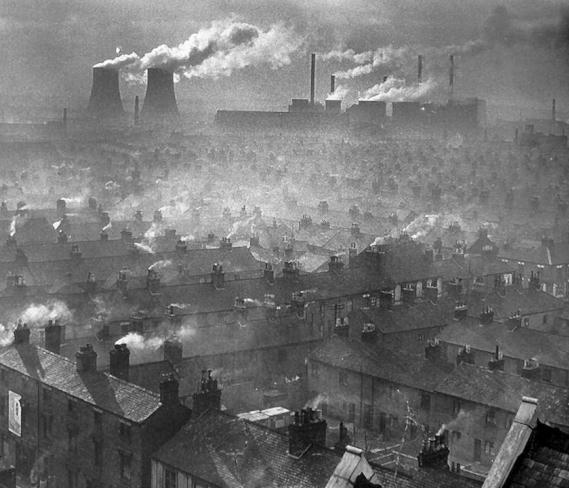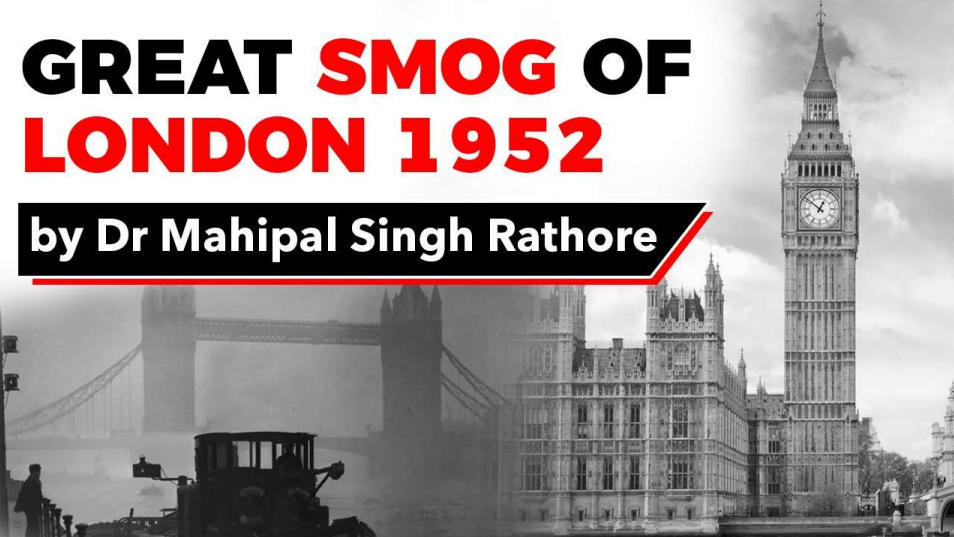Table of Contents

The Great Smog of London 1952
- The great smog was a severe air-pollution event that affected the British capital of London from 5th -9th December 1952.
- A thick layer of smog over the city lasted for 5 days and killed thousands.
- This was the worst air-pollution event in the history of the United Kingdom and the most significant in terms of its
- effect on environmental research,
- government regulation,
- and public awareness of the relationship between air qualityü and health.
- London had suffered since the 13th century from poor air quality, which worsened in the 1600s

- The 1952 fog was strange – yellow-black in colour and thicker than the residents of the always foggy London had seen before.
- The smell of the fog was different too, a smoky, chemical smell
What is SMOG?
- Fog can be considered a type of low-lying cloud and is heavily influenced by nearby bodies of water, topography, and wind conditions.
- FOG + SMOKE = SMOG
- Coinage of the term “smog” is often attributed to Dr. Henry Antoine Des Voeux in his 1905 paper, “Fog and Smoke” for a meeting of the Public Health Congress.
Reasons for the Great Smog of 1952
- A period of cold weather
- An anticyclone depression
- Windless conditions
- Airborne pollutants arising from the use of coal
- Pollution and smoke from vehicle exhaust—particularly from steam locomotives and diesel-fuelled buses
The coal factor
- The cold weather preceding and during the Great Smog led Londoners to burn more coal than usual to keep themselves warm.
- Post-war domestic coal tended to be of a relatively lowgrade, sulphurous variety because better-quality “hard” coals tended to be exported.
- There were also numerous coal-fired power stations in the Greater London area .
- On 4 December 1952, an anticyclone settled over a windless London, causing a temperature inversion with cold, stagnant air trapped under a layer (or “lid”) of warm air.
- The resultant fog, mixed with smoke , particulates and other pollutants such as sulphur dioxide, formed a persistent smog.
- The absence of significant wind prevented its dispersal and allowed an unprecedented accumulation of pollutants.
Effects on Life of Londoners
- It caused major disruption by reducing visibility and even penetrating indoor areas.
- Driving
- Public transport
- Essential services – Ambulances
- Theatres stopped functioning
- Sports leagues Cancelled


- According to the UK’s Met Office, the following pollutants were emitted each day during the smoggy period:
- 1,000 tonnes of smoke particles,
- 140 tonnes of hydrochloric acid,
- 14 tonnes of fluorine compounds, and
- 370 tonnes of sulphur dioxide which may have been converted to 800 tonnes of sulphuric acid
The death toll
- UK government would estimated that 4,000 lives were due to theü smog.
- The real number of fatalities is now believed to be closer toü 10,000.
- 1,00,000 more were made ill by the smog’s effects on theü human respiratory tract.
- Most of the deaths were caused by respiratory tract infections,ü from hypoxia and as a result of mechanical obstruction of the air passages by pus arising from lung infections caused by the smog
Delhi



The Clean Air Act 1956
- The Act introduced a number of measures to reduce air pollution
- Introduction of “smoke control areas” in towns and cities in which only smokeless fuels could be burned.
- By shifting domestic sources of heat towards cleaner coals, electricity, and gas
- The Act also included measures to prevent the emission of dark smoke from chimneys
- Required new furnaces to be smokeless and that grit and dust should be minimised.

London Today

- In recent decades, emissions from diesel motor vehicles have seen London’s air quality re-emerge as a public safety hazard.
- Today’s air is unlike before; it doesn’t choke people while they walk down the street, but it may be just as dangerous.
- Air pollution is linked to the early deaths of about 40,000 people a year in the UK and causes problems such as heart and lung diseases and asthma.
Latest Burning Issues | Free PDF






















 WhatsApp
WhatsApp